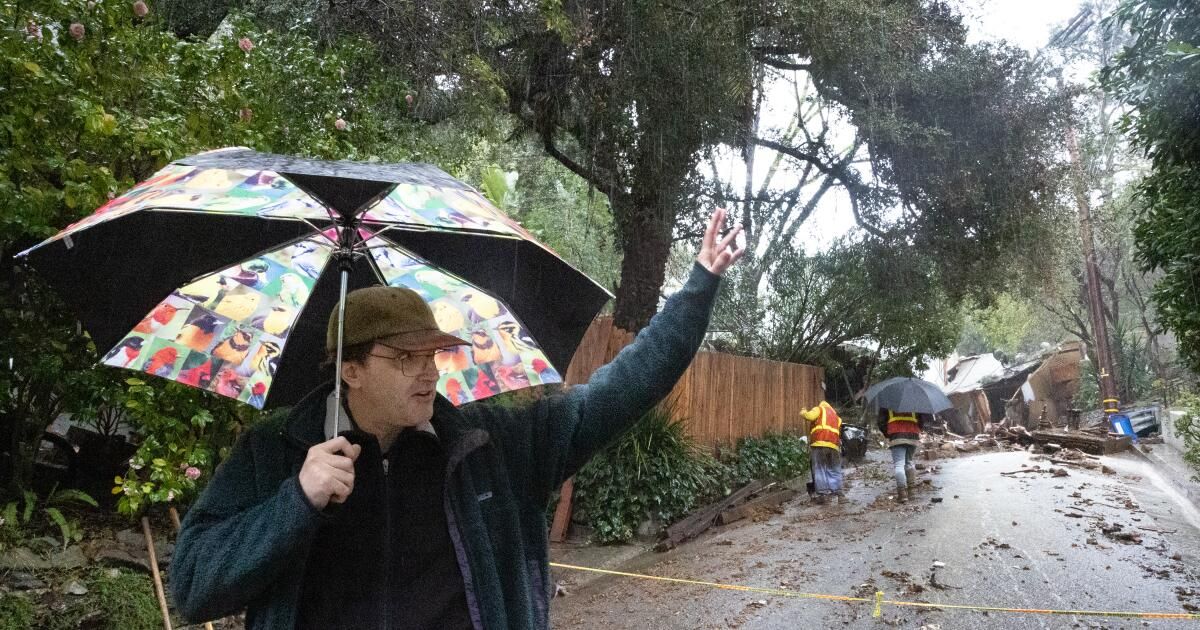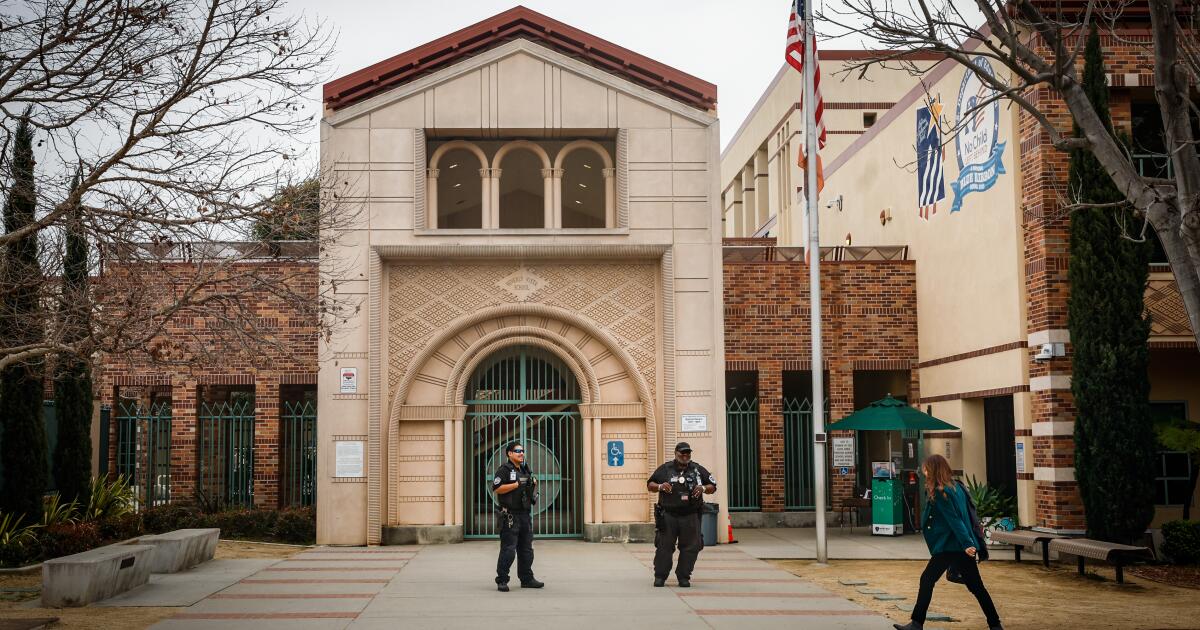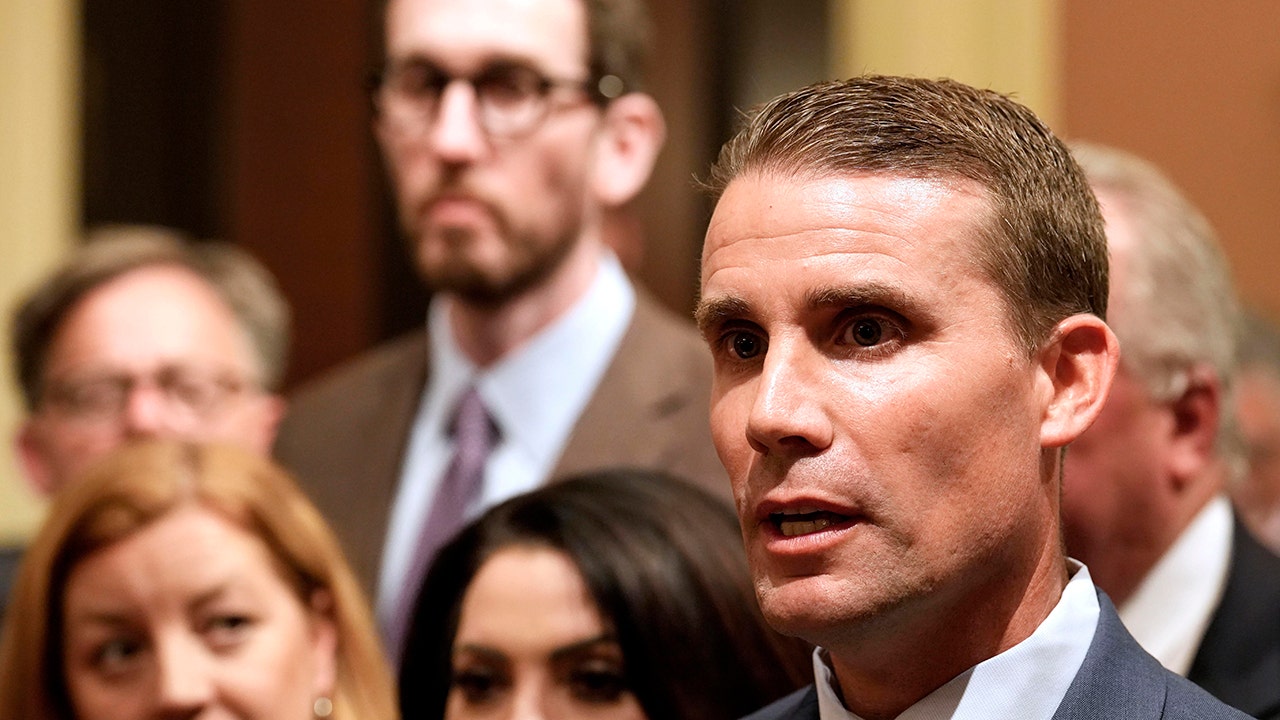When a water agency for most of California's Inland Empire and parts of Orange County began a pilot program to cloud seed the region in November to see if it could boost water supplies, officials expected to face some questions and skepticism. .
What officials didn't expect was to be wrongly accused by critics and conspiracy theorists of causing one of the strongest storms in recent California history or, worse, of trying to poison the region.
Shortly after Southern California was hit by two major storms in February, dumping more than a foot of rain in some areas and causing flooding and mudslides, conspiracy-mongering accounts on social media have sought to blame the Santa Ana basin due to the force of the storms. Project Authority (SAWPA), a joint energy agency charged with overseeing and protecting the Santa Ana River Basin that includes San Bernardino, Riverside and Orange counties.
In videos and social media posts, accounts suggest, without evidence, that the agency's new cloud seeding program caused the two February storms. Shared thousands of times, the posts have led people to leave expletive-filled comments on the agency's social media accounts. Others have approached agency employees directly, accusing them of damaging people's homes by causing the storm or of trying to poison communities with cloud-seeding chemicals.
Despite the allegations, agency officials said there was no cloud seeding during the last two major storms and, more importantly, cloud seeding cannot create storms on their own. The agency also pointed to multiple studies that have been published over several decades showing that the level of silver iodide used in cloud seeding is not toxic to humans and is 1,000 times lower than U.S. drinking water standards. the Environmental Protection Agency.
The program, said Jeff Mosher, general manager of the Santa Ana Basin Project Authority, is just one way officials are seeking to increase water supply to the basin's dams and basins, which serve about 6 million residents in four counties.
In San Diego County, where some have blamed the agency for storm damage, officials have had to point out that clouds have not been seeded in the county.
But that hasn't stopped the emails and calls to the agency, or the comments left on its social media accounts.
“Thanks to the fool [expletive] Like you, there are mudslides and flooding in California,” one person told Mosher on the social platform X.
“Any other depopulation projects in the works?” another person asked on Instagram.
When the agency launched the program in November, Mosher said, he expected it to come under some scrutiny. Although cloud seeding has been around for decades, many people are unfamiliar with the practice. But shortly after the storms, he said, he and others at the agency have seen a significant increase in emails and calls repeating some of the conspiracy theories spreading on social media.
In recent days, for example, he and others have received multiple emails and calls accusing SAWPA of causing the flooding in the wake of the storms. Other calls accuse the agency of causing chemtrails, a conspiracy theory that claims that the condensation evidence left behind by airplanes is toxic chemicals that are sprayed on people for some unspecified nefarious reason.
Chemtrails have been associated with the practice of cloud seeding and appear to have been incorrectly associated with the SAWPA program as well, even though the agency does not use aircraft and instead seeds clouds from ground units.
Mosher has pointed out to some people that the agency did not seed clouds during the Feb. 3-8 or Feb. 18-19 storms because forecasters were predicting significant, even catastrophic, rainfall.
According to the agency, the last time it seeded clouds near the basin was on February 1. And officials point out that, by their own estimates, cloud seeding can increase precipitation by only 5% to 10%.
But the emails and comments continued, especially after one of the online videos promoting the conspiracy theory encouraged people to contact Mosher and two other agency employees directly.
The video, which received thousands of likes on Instagram but was reported Thursday for spreading false information, begins ominously with images of storm damage.
“If the disastrous floods and record rainfall hitting Southern California right now don't seem natural to you, it's probably because they aren't,” says one woman, narrating a video of floods and water rescues.
“We now have information from the government itself that it is carrying out climate modifications, also known as cloud seeding,” continues one man.
The video claims that the Santa Ana Basin Project Authority “boasts that it destroyed silver iodide mixed with acetone, linked to cancer.”
The problem with the claims is that cloud seeding has not been a clandestine practice as the video claims, but has been openly discussed and studied. Those studies, conducted over decades, have also found that the level of silver iodide used in planting is so small that it has had no noticeable effect on the environment, wildlife, or the air that people nearby breathe.
Acetone, which is used to release silver iodide particles from soil, is converted to water and carbon dioxide, an agency spokesperson said.
However, the conspiracy appears to take advantage of other unfounded theories, such as chemtrails.
Some of the accounts promoting the conspiracy theory on TikTok and Instagram have tens of thousands of followers and have spread other conspiracy theories, such as claims that the January 6 attack on the US Capitol was orchestrated by the FBI, that the world's governments are actually run by a secret cabal known as the New World Order, and that popular singer Taylor Swift is a psychological operation orchestrated by the Pentagon.
But like other misinformation that has infected social media platforms, the conspiracy has spread to the real world. In San Diego, one resident blamed the county Board of Supervisors for flooding and damage caused by recent storms.
“You planted us on purpose,” the resident said during the Feb. 6 board meeting. “You destroyed these people's homes. “They didn’t have flood insurance, but everyone knew that.”
The resident, identified as “Kiera,” was wearing a black hat that said, “COVID is a scam.” A video of her comments has been shared on social media, fueling the unfounded claim that water seeding was to blame for the storms.
To support her claim, the resident cited the Santa Ana Watershed Project Authority's cloud seeding program, even though the agency does not operate in San Diego County and the program is not carried out there. .
The resident also alluded to chemtrails.
“You don't think anything you see is happening in heaven?” she said. “We've seen them for years.”
Timothy Tangherlini, a UC Berkeley professor who has studied conspiracy theories, said it's common for them to be linked to other debunked theories so they spread.
“They tie them together in these super-conspiracy theories that are totalizing, and they give you an understanding of the world, a real us-versus-them situation,” he said. “This is how conspiracy theories stay together.”
Older conspiracy theories often help new conspiracies take hold, offering some familiarity to people who are exposed to the information.
“The next time you see it again, see it from a couple different sources, you'll think there may be something to that,” Tangherlini said.
Conspiracy theories and misinformation have been particularly prevalent in recent years, fueled by political polarization and distrust of government, official, scientific and journalistic sources, he said.
“Conspiracy theories are not really strong and you can make them fall apart, but they are incredibly resilient,” he said. “That's why you see them come back to life.”
In this case, he said, storms that dumped more than a foot of rain in some parts of Southern California were more likely the result of climate change. For some of those who do not believe in climate change, or are politically opposed to taking action to address it, a conspiracy theory that attempts to blame the storm on an improbable, invisible and unproven force may seem more acceptable than reaching a conclusion. agreement for the visible effects thereof.
“In some ways it's a counterargument,” Tangherlini said. “People say this is because of climate change and they say, 'No, no, no, because in my ideological background I'm not a supporter of climate change.'”
Mosher, who has seen some of the conspiracy videos, said he tries to see misinformation as an opportunity, especially if it drives some people to the agency's website to learn more about the program.
“We are a public agency and we seek public comments, public questions, so we can answer them,” he said. “If people see those posts and contact us by email about our weather modification program and have questions, we will respond.”
After all, the agency is trying to be transparent about the program, he said.
“Our goal is not to change people's opinions: their opinions are their opinions,” he said. “We just want to give them the information to help.”












